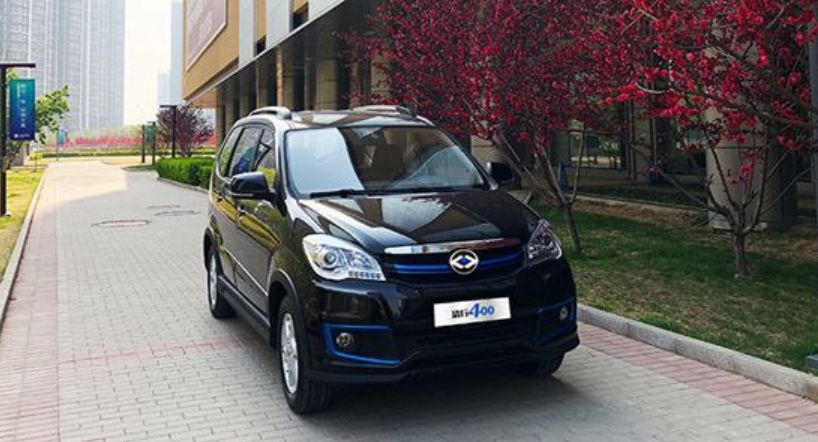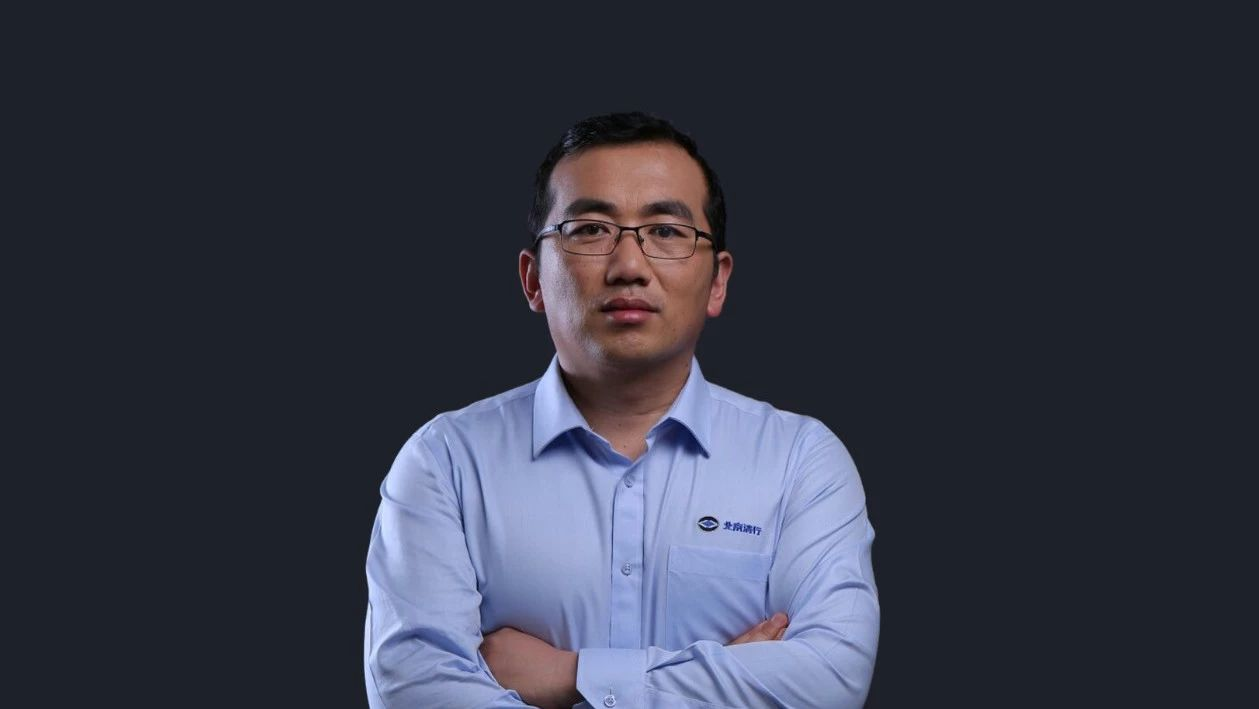During the Beijing Auto Show, Bosch China’s Executive Vice President, Xu Daquan, disclosed that China has nearly 100 new car companies. As a Tier 1 supplier and an integral part of the automotive industry, Bosch has a keen sense of foresight concerning China’s overheated market.
Do we really need so many car brands in China? The answer is self-evident. As predicted by many industry insiders, after this tumultuous new car movement, only a maximum of 5 companies will survive.
A brutal elimination match is about to occur: top companies will make full-size seven-seat SUVs, those with less financing will make B-level SUVs, and less powerful companies will make compact or small-size SUVs. Combined with traditional domestic and joint venture SUVs competing fiercely, so many companies are soon to battle bloody struggle for survival in China’s fastest-growing SUV market in the next two years.
Concentrating on the SUV market is a safe and correct choice, but it is also a lazy choice. In this kind of environment, products that seem adventurous and are defined towards specific markets should garner more attention, such as today’s topic of Qing Xing 400.
Not In Beijing, Shanghai, or Guangzhou?
If you are a founder of a new car company, establishing a smart and electric SUV product strategy is the easiest way to impress investors, especially with support for network connectivity and sharing.
As mentioned above, about 90% of companies in this new car wave have done just that, and Qing Xing 400 is also an SUV, but their user profile is different from almost all other new car companies.
Qing Xing’s strategy is to target the blue ocean market of third-, fourth-, and fifth-tier cities and provide differentiated consumption upgrades.
Why avoid Beijing, Shanghai, and Guangzhou? Of course, fierce competition is one factor. More fundamentally, the reason is that focusing on Beijing, Shanghai, and Guangzhou product development is easy to get lost: this is a policy-driven and license-driven market, and consumers are not facing choices, but no choices at all.
Setting aside policy factors and allowing electric cars and gasoline cars to compete on a level playing field in a pure market environment, we will find a cruel truth: even in China, which has the world’s highest production and sales volumes of electric vehicles, the infrastructure around electric cars is still not sophisticated enough, the industrial chain is far from being fully commercialized, and users are more likely to choose gasoline cars except for Tesla, which has a first-mover advantage in providing a comprehensive user experience.
Therefore, in the next two years, the market environment will look like this: more than 100 electric car companies will compete in Beijing, Shanghai, and Guangzhou, but in most areas where subsidies are declining and licenses are not limited, electric cars’ true opponents are gasoline cars.
This is also why Qing Xing focuses on product development based on application scenarios, emphasizing strengths, avoiding weaknesses, benchmarking gasoline cars, and having an opportunity to win by surprise.
What kind of electric car do consumers in third-, fourth-, and fifth-tier cities need?
No ADAS, no intelligent car systems… rebuilding from the ground up.
- Economic.Chehejia (清行) adheres to the first law of the market, which is to make products affordable for the low-end market. Regarding product development, the ability to control costs and optimize TCO (Total Cost of Ownership) are important factors.
In terms of cost control, Chehejia did not develop a new platform from scratch, but based its development on the First Automotive Works’ Senya S80 platform, while striving for lightweight design. It’s worth mentioning that Zhang Huakun, the founder and CEO of Chehejia, is a serial entrepreneur. Prior to Chehejia, he was engaged in the research and development of special engineering vehicles. The entire Chehejia team has a background in the automotive industry and has professional sensitivity to cost control and project management.

As a six-seat pure electric SUV, the basic configuration of Chehejia 400 includes:
- Specifications of 4148mm/1680mm/1740mm
- Comprehensive working conditions range of 305km
- Maximum power of 60 kW permanent magnet synchronous motor
- 45.5 kWh battery pack
- Fast charging to 80% in 1 hour
- And most importantly, a price range of 7.98-8.38 yuan after subsidies.
Furthermore, Chehejia optimized the TCO by simplifying the powertrain, and electric cars have natural advantages in energy consumption, maintenance, and upkeep. For example, the Tesla Model S has better TCO than the same-class cars of BBA.
Let’s talk about Chehejia’s choices. For example, the maximum power of 60 kW permanent magnet synchronous motor. This small motor, coupled with the large body of Chehejia 400, allows for a top speed of 102 km/h and a range of 305 kilometers with a 45.5 kWh battery pack.
These data might not be impressive enough for a financing BP, as they lack the catchphrases such as “0-100km/h in 5 seconds” and “range exceeds 500 kilometers,” but industry insiders of the electric car industry know that the larger the motor power, the higher the energy consumption, and the larger the battery pack, the more expensive or heavier (higher energy consumption) the car will be.
Zhang Huakun repeatedly emphasized the importance of developing products based on user needs, with regard to whether the product should cater to the consumer market (To C) or the venture capital market (To VC), which is a question that many startups haven’t figured out.
Chehejia’s extreme focus on user needs results in a cost of only 8 yuan per 100 kilometers for Chehejia 400.
- User needs
What kind of user does Chehejia 400 target?
The official website has a small detail: the introduction of its interior space specifically mentions its load-carrying capacity. This car supports both people and goods, which is called “suitable for both home and commercial use” by the official. To maximize the advantage of space, the last two rows of seats of Qingxing 400 also support folding and disassembly.
Some people may be confused why SUVs are used for transporting goods? Why not just buy a truck? In fact, the definition of Qingxing 400 is already very clear: the electric version of Wuling Hongguang.
What is Wuling Hongguang? This low-end MPV car model with a crossover positioning of commercial vehicle and passenger vehicle created sales miracles in China and even the global automotive industry. In its peak period in 2014, the Wuling Hongguang series set a record of monthly sales of 80,000 units and won the domestic passenger car sales championship with an annual sales volume of 750,000 units that year.
Wuling Hongguang is the classic model that balances comprehensive cost, performance, practicality, and product design around the scenarios. This group of consumers regards cars as necessary tools for family production and life, and is extremely sensitive to the cost of car ownership due to the high frequency of car use.
However, based on General Motors’ expertise in fuel and powertrain as well as its good market performance, Wuling itself does not have enough power to transform into an electric vehicle.
But as mentioned earlier, economy is a very important aspect of electric vehicles compared to the same level of gasoline vehicles, and positioning in the low-end market that is sensitive to usage costs magnifies this feature. Therefore, Qingxing 400 is the sharp blade that Zhang Huakun seized to penetrate the low-end market of commercial and passenger vehicles.
- Production & Sales
Regarding the relationship between Qingxing and traditional automakers, Zhang Huakun impressed me with, “We are challenging product definition and iteration speed, not manufacturing processes or quality systems.”
Qingxing chose to cooperate with FAW Group to produce Qingxing 400. A large amount of debugging was carried out on the existing production line of FAW, and the debugged production line can fully meet the production needs of Qingxing 400. Considering the product positioning, Qingxing 400 does not have too many complicated model processes, and FAW’s existing OEM resources can meet Qingxing’s quality requirements.
However, Zhang Huakun emphasized that procurement, quality control, logistics, etc. are all controlled by the Qingxing team.
Since we mentioned product positioning and quality requirements, let’s talk more about Qingxing’s trade-offs: for example, Qingxing 400 can use a 60 kW motor (about 82 horsepower, fully targeting Wuling and Baojun models), but in the 12 extreme safety and quality inspections such as high-temperature, low-temperature, and fire, not a single step can be saved, and the 8-year, 150,000-kilometer quality warranty is equivalent to Tesla.
Next, let’s talk about sales, which is another completely different business strategy between Qingxing and other new car makers.
Commonly, new car companies will definitely have self-operated stores to fully grasp the sales end. Qingxing’s strategy is to ideally bring franchised offline stores to consumers’ doorsteps, penetrating the entire Chinese car market like the capillaries of the human body.The area of this small and delicate terminal store is controlled between 100-500 square meters and is managed by Qingxing. In terms of profit distribution, Qingxing has made great concessions to ensure that franchisees can quickly profit and maintain loyalty. At the same time, franchisees also act as a bridge between Qingxing and users to ensure that Qingxing can receive feedback and suggestions from users. Because of the bundled interests, franchisees are also responsible for planning and executing ground promotion activities to fully tap into market demand.
In other words, Qingxing adopts the sales layout similar to OPPO and vivo.
This kind of dislocation competition strategy is not uncommon, so the popularity of Qingxing 400 is actually predictable. At the Qingxing dealer conference on June 15th, after seeing the production line and sample cars, more than 150 dealers signed contracts with Qingxing for 4,860 orders.
However, Qingxing is still not satisfied with the expansion of dealers. Zhang Huakun pursues viral expansion. Qingxing’s plan is to sign contracts with 150 first-level dealers and 450 second-level dealers by the end of this year, and then develop 1,000 dealer outlets based on this, with a total of 1,600 dealer outlets, to fully sink the sales network to counties and townships.
After observing too many new car companies with highly similar strategies, Qingxing’s non-traditional approach has sparked more of my thinking. For the huge blue ocean market, how can we jump out of the consensus of major players such as Volkswagen, General Motors, and Toyota, and produce “matching” products rather than “correct” ones.
It is crucial to insight into consumer demand and hit the pain points of user experience to develop products. The change brought about by Tesla’s top-to-bottom product strategy is progressive, but bottom-to-top changes often come more violently.
Let’s wait and see if Qingxing 400 can become the snowflake that triggers an avalanche of national electrification and transformation.* Is the new truck species created jointly by WM Motor and JD Logistics a good business?

This article is a translation by ChatGPT of a Chinese report from 42HOW. If you have any questions about it, please email bd@42how.com.
